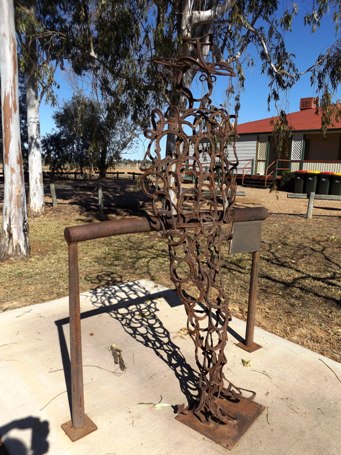Australia So Much to See
South Western Queensland - Dirranbandi and Hebel

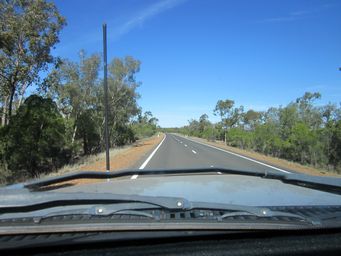
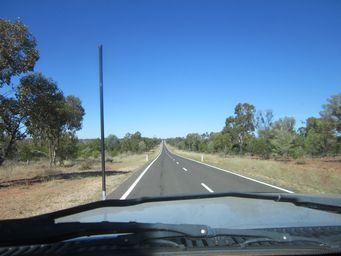
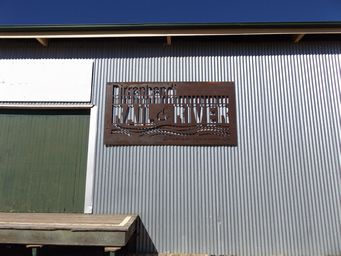
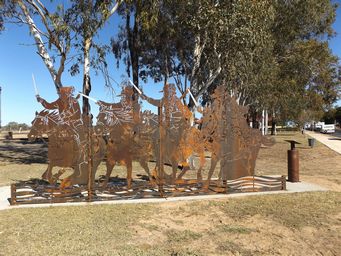
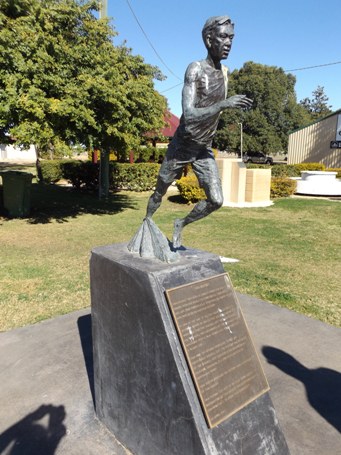
Dirranbandi town is on the Narran River, a tributary of the Balonne River. The area was run as a pastoral station from the 1850s, and in 1885 a town reserve for Dirranbandi was surveyed above the known flood level of the Balonne. A levy bank now protects the present town in times of flooding.
An extension of the railway line from Goondiwindi to Dirranbandi was opened in 1913, and due to the
terrain of multiple river channels and the cost that would be incurred to make bridges, Dirranbandi remained the end of the line.
The town was transferred to the vicinity of the railway station. The railway service only freight after 1994, and was closed completely
in 2008. Most shops are now empty.
When the last train left Dirranbandi, Pam Crothers led the charge, starting negotiations with the Balonne Shire Council and Queensland
Rail to maintain the buildings that pre-existed in the rail precinct with the plan to eventually transform the area into a creative
hub. "Council secured a lease on our behalf to secure the land,” Ms Crothers said.
In the years since, the Arts Council,
alongside various other community organisations, have restored buildings, begun to display history and at present are short-listed
for a grant to complete the precinct with a children's playground and decking.
"Over the past decade or so, we have celebrated a number of anniversaries in town, the 100th year of Dirranbandi rail, 100 years of
the local police, and 50 years of the high school,” Ms Crothers said.
"So we were able to start to collect history and display
it. But we wanted to make it more permanent, so we've received grants to preserve it on storyboards, and that's now displayed in the
old parcels office.”
To Beersheba, Brigadier General William Grant and ‘the men and the horses who couldn’t come home’. During the First World War, Dirranbandi
was a point of embarkation for many men in the region and their horses who fought in the Great War.
"At a mile distant their thousand hooves were stuttering thunder, coming at a rate that frightened a man - they were an awe inspiring
sight, galloping through the red haze - knee to knee and horse to horse - the dying sun glinting on bayonet points."
Trooper
Ion Idriess "The Desert Column" 1932
In memory of all who fought in the Great War 1914 - 1918 and their horses who could not
come home
The Charge of Beersheba took place at dusk on 31.10.1917 and is remembered as the last great cavalry charge. The intention
was to capture intact the water supply of the Beersheba wells for horse and rider; they were successful and were then in a position
to move onto Jerusalem, a significant military victory in the Middle East War.
The charge by the 4th & 12th Light Horse Regiment
of 800 horseman was led by Brigadier-General William Grant (1870 - 1939) who purchased the property Corack (Waldor) at Dirranbandi
after the war and remained here until his death.
Opened 9th December, 2016
Two much loved sons of Dirrandandi on display and the Rail and River precinct, one real and one fiction.
Tom Dancey was born in 1888 in Hebel, and as a child moved with his family to Dirranbandi. Throughout his life Tom worked as
a stockman, boundary rider and was also an amateur runner.
In 1910, at the age of 22, Tom went to Stawell in Victoria where he
ran in the Stawell Easter Gift. When Tom won the Stawell gift, he earned £1,000 for his trainers, was decorated by the Victorian
State Governor with a blue ribbon, and presented with a silver cup.
Tom was the second Aboriginal to win the prestigious Stawell
Gift.
Today Dirranbandi is mainly a cotton town, the local population of around 400 doubles with seasonal pickers during harvest. The Dirranbandi
Cotton Grower's Association was formed in 1997, eleven years after the first local cotton crop was planted. All cotton is irrigated.
In
1989 the Cubbie cattle station on another of the Balonne's tributaries, the Culgoa River, converted to irrigated cotton growing. A
gin was installed at Dirranbandi. By 2001, however, complaints grew about the loss of water flow into the Murray-Darling river system,
and downstream properties were denied natural flooding for pasture growth. In 2009 Cubbie was put up for sale, entailing debates about
its water entitlements. By late 2009 Cubbie had been placed in the hands of administrators. In August 2012 the Australian Government
approved the sale to an international (Chinese 80%) and Australian consortium (20%) and the purchase was completed in January 2013.
Chinese owned Cubbie Station is the largest irrigation property in the southern hemisphere and the biggest user of water in
Australia.
The station's earth walled water storage dams stretch for more than 28 kilometres along the Culgoa River, within
the Murray-Darling basin. In an average year the station uses 200,000 megalitres of water, in a good year as much as 500,000 megalitres. For this, the station pays just $3,700 a year. Their licence to use 460,000 megalitres is over two thirds of the amount of water
used in Sydney.
The water is used to supply 130 square kilometres of irrigated cotton and other crops including wheat,
which generates a net profit in the range of $50 million to $80 million Australian dollars a year.
The controversy of such large
water use in the catchment area for the Darling River dominates the fight to save the Darling.
References:
While not as memorable as the Cunnamulla Fella statue, the song is perpetuated here with the Dirranbandi Dandy created by Duncan Banks
out of welded horseshoes.
So I grabbed my horse that was nice and handy, and never stopped till I reached Dirranbandi.
I was the Dandy at Dirranbandi,
yes I was the Dirranbandi Dandy.
Continuing south from Dirranbandi to Hebel, there were numerous emus creating a hazard for motorists. We met an unlucky caravan
whose new tow vehicle had been immobilised by emu strike. Even more emus were encountered between Hebel and the border. Hebel locals warned us of these road hazards.
Hebel is a small town about ten kilometres north of the New South Wales border. Originally opened in 1894 as a Cobb & Co
changing station, the iconic hotel still features the original hitching rail.
The historic little pub is decorated with John Murray
cartoon style drawings. Novelty doors on the Ladies and Gents at right. John Murray is based in Lightning Ridge.
The general store, with room accommodation and a caravan park behind, was once a dance hall dating back to the 1890s. The original dance floor has been retained. They make great pies and burgers, and other meals which are well reported by travellers.
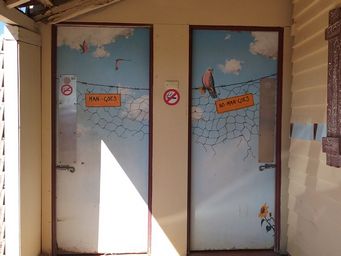
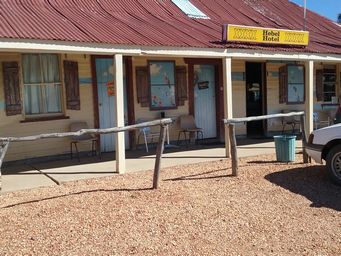
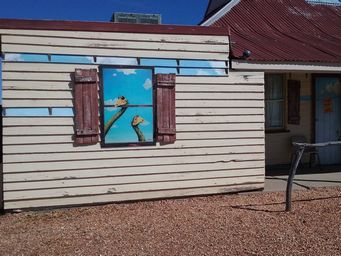
A short walk has plaques outlining the town’s history. Notorious bushrangers Dan Kelly and Steve Hart from the legendary Ned Kelly
Gang are claimed to have used Hebel as a hideout. Legend says the men lived under the aliases and regularly frequented the Hebel Hotel.
The influence of the Kelly Gang on Hebel was so strong that the tiny town was previously known as Kelly’s Point. It wasn’t until the
early 1890s that the name was changed to Hebel, most likely after a local German family residing in the town. Nobel Van Hebel is said
to have played a role in staging the Cobb & Co coaches.
In addition to the caravan park, there is a rest area suitable for
unserviced overnight stays along the Bokhara River.
